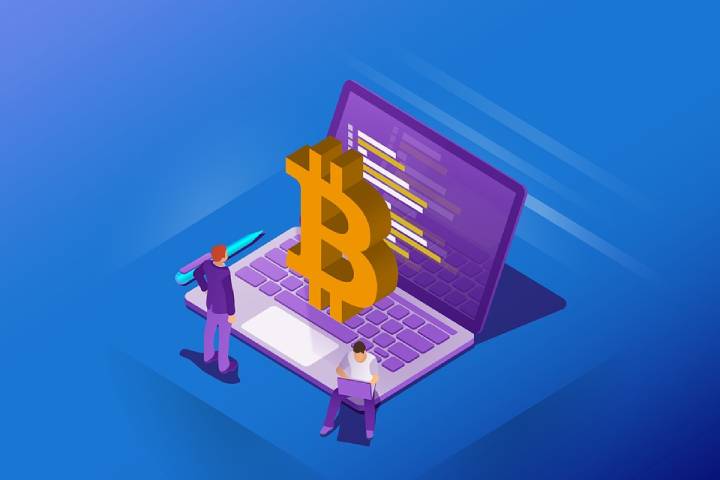Business
Tax Filing Advice: Self-employment Tax (IRS Form 1040)
In this post, we’ll show you how to fill out Form 1040 and offer some tips on how to minimize your tax obligations. Tax Filing Advice – Self-employment Tax – IRS Form 1040.

Filing your taxes can be challenging, especially if you are a freelancer. As a freelancer, you are required to pay self-employment tax, maintain track of your revenues and expenses, and submit projected tax payments throughout the year. You can complete an IRS Form 1040 with a little help and a quarterly tax calculator, despite the fact that it could appear challenging. In this post, we’ll show you how to fill out Form 1040 and offer some tips on how to minimize your tax obligations.
Table of Contents
1. Assemble Your Papers
Before you start filling out your Form 1040, you must gather all the necessary information and paperwork. Your W-2s, 1099s for any freelance work you did, receipts for any anticipated tax deductions, and any other financial records you might have are included in this. You must also include your Social Security number and the Social Security numbers of any dependents you wish to claim.
2. Verify Your Filing’s Status
Your file status affects your tax rate and the size of your standard deduction. Determine which filing status is appropriate for you based on your marital status, the number of dependents you have, and other factors.
3. Ascertain your income
Your total income for the tax year is what is referred to as your gross income. This includes all forms of income, including wages, salaries, tips, and revenue from side jobs. Add up your income for the tax year and gather all of your supporting papers. List all of your sources of income from contract work.
4. Remove Your Modifications
By deducting adjustments from your gross income, you can reduce your taxable income. They also pay your health insurance premiums, student loan interest, and IRA contributions if you work for yourself.
5. Choose Your Tax Savings
By taking some expenses out of your taxable income, you can reduce it. The two distinct types of tax deductions are standard and itemized. The standard deduction is an agreed-upon sum of money that is available to all tax filers. As itemized deductions, you are allowed to deduct some costs like state and local taxes, charity giving, and mortgage interest. It is better to select the tax deduction that would result in the greatest financial savings.
6. In Step Six, determine your taxable income.
After subtracting either your standard deduction or your itemized deduction from your AGI, your taxable income will be determined. According to federal law, this amount is your taxable income.
7. Choose Your Tax Credits
They are made up of education, earned income, and child tax credits. To reduce your tax obligation, find out which tax credits you are eligible for.
8. Find Out How Much Tax You Owe
Your overall tax liabilities, less any payments or credits, are referred to as your tax burden.

9. Verify Your Upcoming Tax Payments
If you are self-employed, you must make estimated tax payments throughout the year. Check your expected tax payments throughout the year to ensure you made the required amount to avoid underpayment penalties.
10. Finishing Schedule C
Schedule C, the relevant form, is used to report your self-employment earnings and expenses. To calculate your self-employment tax, which is based on your net self-employment income, use Schedule C. In addition to this, you will also owe regular income tax.
11. Add Up Your Credits and Payments
Add all of your year-end payments, such as estimated tax payments and any taxes you have withheld from your pay. If you qualify, take a deduction for any tax credits. Here, your overall payments and credits will be displayed.
12. Figure out whether you owe a refund or are due one.
You should evaluate your entire tax burden in relation to your total payments and credits. If your tax due is greater than the sum of your payments and credits, you will be obliged to pay extra tax.
13. Upload Your Return
When you’ve finished filling out Form 1040 and any necessary attachments, sign and date your return, and then send it to the relevant IRS address. Make sure to keep a copy of your return and any supporting documents for your keeping.
14. Tips on How to Cut Your Taxes as Much as Possible
Now that you know how, let’s speak about how to complete Form 1040 so that you may maximize your tax savings as a freelancer.
Using tax deductions is a smart move.
As a freelancer, you might be eligible to write off a range of expenses from your taxes, such as business travel, office supplies, and office equipment. Keep note of all your expenses throughout the year in order to maximize any relevant deductions.
Submit projected tax payments
As was previously stated, self-employed individuals are obligated to make projected tax payments throughout the year. This allows you to keep track of your tax obligations and prevent underpayment fines.
You May Want To Add
The ability to deduct more business expenses and a lower tax rate on self-employment income are just two of the additional tax benefits that incorporating your freelancing business may offer. Speak with a tax professional if you’re unsure if incorporation is the right option for you.
Employ tax-favored retirement accounts.
You may be able to reduce your taxable income and increase your tax savings by contributing to tax-advantaged retirement plans like an IRA or Solo 401(k). Use these accounts if you meet the requirements.
Conclusion
Although filling out a Form 1040 can be intimidating, with a little planning and assistance, it is actually rather easy. Even though you may face certain challenges as a freelancer when attempting to maximize your tax savings, there are a number of strategies you may employ to help minimize your tax burden. By taking advantage of tax deductions, paying expected taxes, considering incorporation, and using tax-advantaged retirement plans, you may keep more of your hard-earned money in your pocket.
AI Tools
Achieving Business Agility with AI-Integrated ERP Implementation
Let’s explore some common hurdles that businesses might face during AI-Integrated ERP implementation and discuss strategies to overcome them:

In today’s fast-paced and fiercely competitive business world, adapting quickly and effortlessly is more critical than ever. This is where the concept of business agility comes into play. Business agility is all about being nimble, flexible, and responsive to changes in the market, customer demands, and industry trends. It’s like being a swift and graceful dancer who effortlessly adjusts their moves to match the rhythm of the music while everyone else struggles to keep up.
Now, how can a business achieve such agility? This is where Enterprise Resource Planning (ERP) systems step in. Imagine an ERP system as the ultimate conductor of a well-orchestrated business symphony. It combines various departments and processes under one roof, harmonizing their efforts and enabling seamless collaboration. ERP systems streamline operations, optimize workflows, and provide a comprehensive view of business data, allowing decision-makers to stay on top of their game.
ERP examples include Oracle Cloud Enterprise Resource Planning – NetSuite, Microsoft Dynamics 365, and others.
Table of Contents
1. The Role of ERP in Enhancing Agility
Let’s dive deeper into the role of ERP systems in enhancing agility and the benefits they offer in centralizing data, automating processes, reducing operational inefficiencies, and fostering data-driven decision-making.
Centralizing Data: One of the key ways ERP systems contribute to organizational agility is by centralizing all essential data. Instead of having data scattered across different departments and systems, an ERP system acts as a single source of truth, providing a unified and comprehensive view of business information. This centralized data repository enables faster access to critical information, facilitating better communication and collaboration between departments. With everyone working from the same data, it becomes easier to respond swiftly to changes, make informed decisions, and adapt strategies as needed.
Automating Processes: ERP systems streamline and automate various business processes, from finance and accounting to inventory management and human resources. By automating routine tasks and workflows, businesses can save valuable time and resources, which can be directed toward more strategic activities. This automation increases operational efficiency and minimizes the risk of human errors, ensuring that processes run smoothly and consistently. This level of automation is crucial in maintaining agility, especially when responding quickly to market fluctuations and customer demands.
Reducing Operational Inefficiencies: Process inefficiencies can act as roadblocks to business agility. ERP systems identify and address these inefficiencies by standardizing processes and eliminating redundant tasks. By streamlining operations, businesses can significantly improve their overall efficiency and responsiveness. For example, ERP systems can optimize inventory management, reducing stockouts and overstocking, improving customer satisfaction and cost savings. Businesses can better adapt to market changes and seize new opportunities by minimizing wastage and maximizing resource utilization.
Fostering Data-Driven Decision-Making: In today’s data-driven world, making decisions based on accurate and up-to-date information is crucial for business success. ERP systems facilitate data-driven decision-making by providing real-time insights and analysis. Managers and executives can access key performance indicators, financial data, and operational metrics at their fingertips, allowing them to make informed decisions swiftly. Quick and data-driven decision-making is vital in an agile organization to capitalize on emerging opportunities and navigate challenges effectively.
2. Integrating AI into ERP Systems
Let’s shift our focus to how AI can specifically enhance ERP systems.
Advanced Analytics: AI empowers ERP systems with advanced analytics capabilities, enabling businesses to extract valuable insights from their data. With AI-driven analytics, businesses can uncover patterns, trends, and correlations that might be overlooked. These insights can help identify new market opportunities, understand customer behavior, and optimize operational processes.
Predictive Capabilities: AI equips ERP systems with predictive analytics, allowing businesses to anticipate future outcomes based on historical data and current trends. For example, AI can forecast product demand, helping companies adjust their inventory levels accordingly and avoid stockouts or overstocking. Predictive maintenance is another valuable application where AI can detect potential equipment failures before they occur, minimizing downtime and maintenance costs.

Intelligent Automation: AI brings a new level of automation to ERP systems, making processes even smarter and more efficient. Intelligent automation enables ERP systems to handle complex tasks autonomously, reducing the need for manual intervention. For instance, AI-powered bots can process invoices, perform data entry, and generate reports automatically. This frees up employees’ time and allows them to focus on higher-value tasks that require creativity and critical thinking.
Personalized User Experience: AI can enhance the user experience within ERP systems by providing personalized recommendations and interfaces. The system can learn from individual users’ behaviors and preferences to tailor the user interface, making it more intuitive and efficient for each user.
Businesses can achieve greater agility and competitiveness by integrating AI into ERP systems. The combination of AI’s advanced analytics, predictive capabilities, and intelligent automation empowers organizations to make data-driven decisions faster, optimize their operations proactively, and respond rapidly to changing market dynamics.
3. Overcoming Challenges in AI-Integrated ERP Implementation
Integrating AI with existing ERP systems can be a transformative journey for any organization, but it comes with its fair share of challenges. Let’s explore some common hurdles that businesses might face during AI-Integrated ERP implementation and discuss strategies to overcome them:
Data Compatibility: One of the significant challenges is ensuring that AI algorithms can seamlessly work with the data stored in the ERP system. Legacy ERP systems might sometimes need the data structures or formats required for AI applications. To address this, businesses should invest in data integration solutions that bridge the gap between AI and ERP systems. Data cleansing, transformation, and normalization may be necessary to make the data AI-friendly.
System Complexity: Integrating AI into an existing ERP system can introduce additional layers of complexity. The interactions between AI modules and the ERP system must be carefully designed to avoid conflicts or disruptions. This requires a thorough understanding of AI technologies and the ERP system’s architecture. Engaging experienced ERP consultancy consultants or working closely with the ERP and AI vendors can help navigate this complexity.
Change Management: Introducing AI often means introducing significant changes to existing workflows and processes. Resistance to change is a common challenge during AI-Integrated ERP implementation. To address this, businesses should prioritize change management efforts. Communicate the benefits of AI and how it will improve employees’ work experience and productivity. Involve key stakeholders early and encourage open dialogue to address concerns and build buy-in.
Employee Training: Implementing AI requires employees to learn new tools, techniques, and processes. Training is crucial in helping employees embrace AI and use it effectively. Develop comprehensive training programs tailored to different user groups, from end-users to administrators. Provide hands-on training, workshops, and documentation to help employees feel confident and competent using the AI-enabled ERP system.
Data Security and Privacy: Integrating AI into ERP systems involves handling sensitive business data. Businesses must address concerns related to data security and privacy. Implement robust security measures to protect data from breaches and unauthorized access. Ensure compliance with data protection regulations and consider anonymizing or aggregating data when applying AI algorithms to protect individual privacy.
Performance and Scalability: AI applications can be computationally intensive, and ERP systems must be able to handle the increased workload. Businesses should assess their ERP infrastructure’s performance and scalability to ensure it can accommodate AI without sacrificing system responsiveness. Upgrading hardware, leveraging cloud-based solutions, or optimizing existing infrastructure might be necessary.
Continuous Monitoring and Maintenance: AI-Integrated ERP solutions require ongoing monitoring and maintenance to perform optimally. Implement processes for regular model validation, data quality checks, and algorithm updates. Establish a dedicated team responsible for AI maintenance and support and empower them with the necessary tools and resources.
4. The Takeaway
Embrace the power of AI-Integrated ERP to fuel your business’s agility and stay ahead in the competitive landscape. Leap data-driven decision-making, seamless automation, and enhanced efficiency. Start your journey to success with AI-ERP integration today and shape a future of endless possibilities. Don’t wait; act now!
-

 Instagram2 years ago
Instagram2 years agoBuy IG likes and buy organic Instagram followers: where to buy them and how?
-

 Instagram2 years ago
Instagram2 years ago100% Genuine Instagram Followers & Likes with Guaranteed Tool
-

 Business4 years ago
Business4 years ago7 Must Have Digital Marketing Tools For Your Small Businesses
-

 Instagram3 years ago
Instagram3 years agoInstagram Followers And Likes – Online Social Media Platform

















